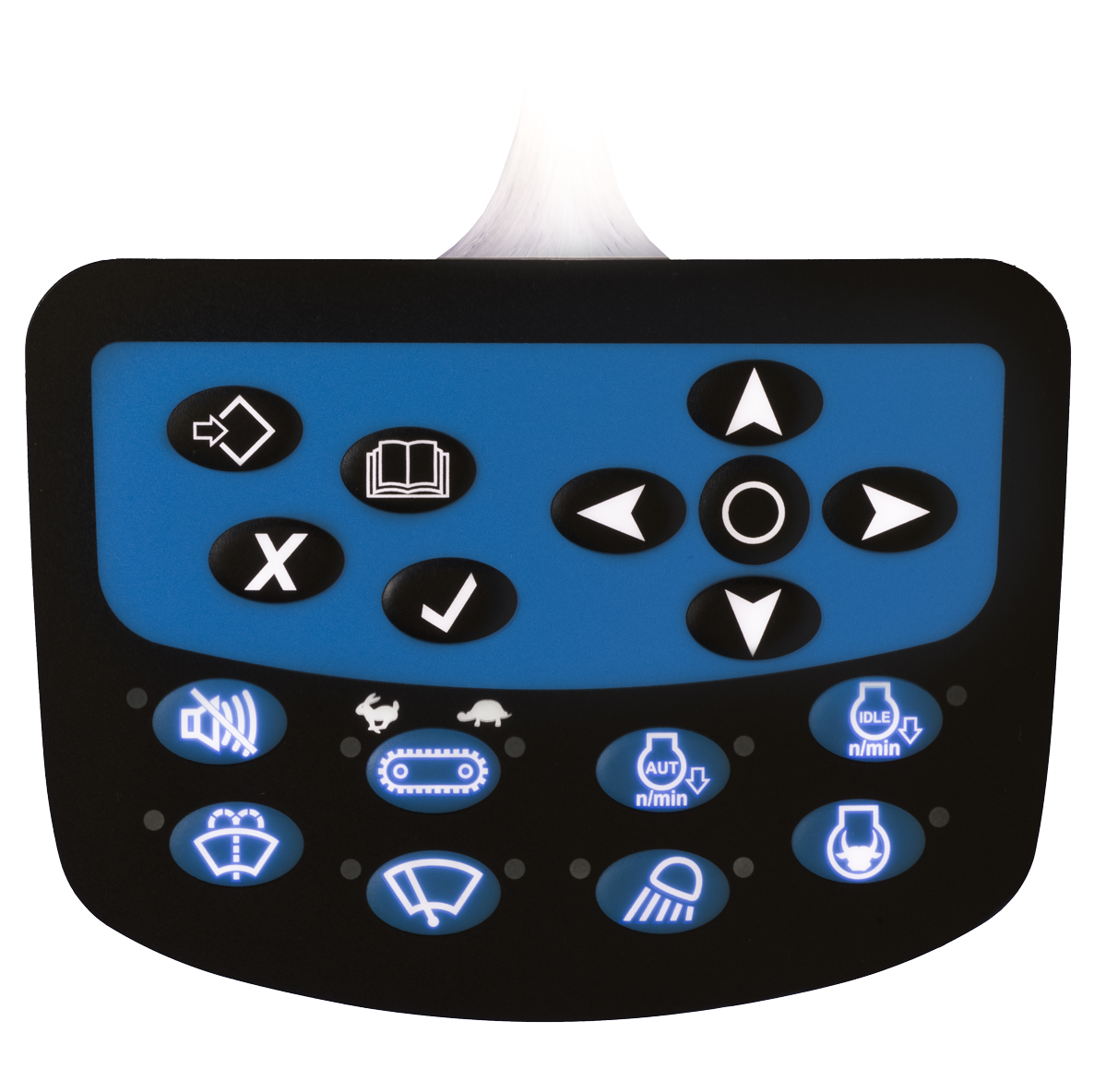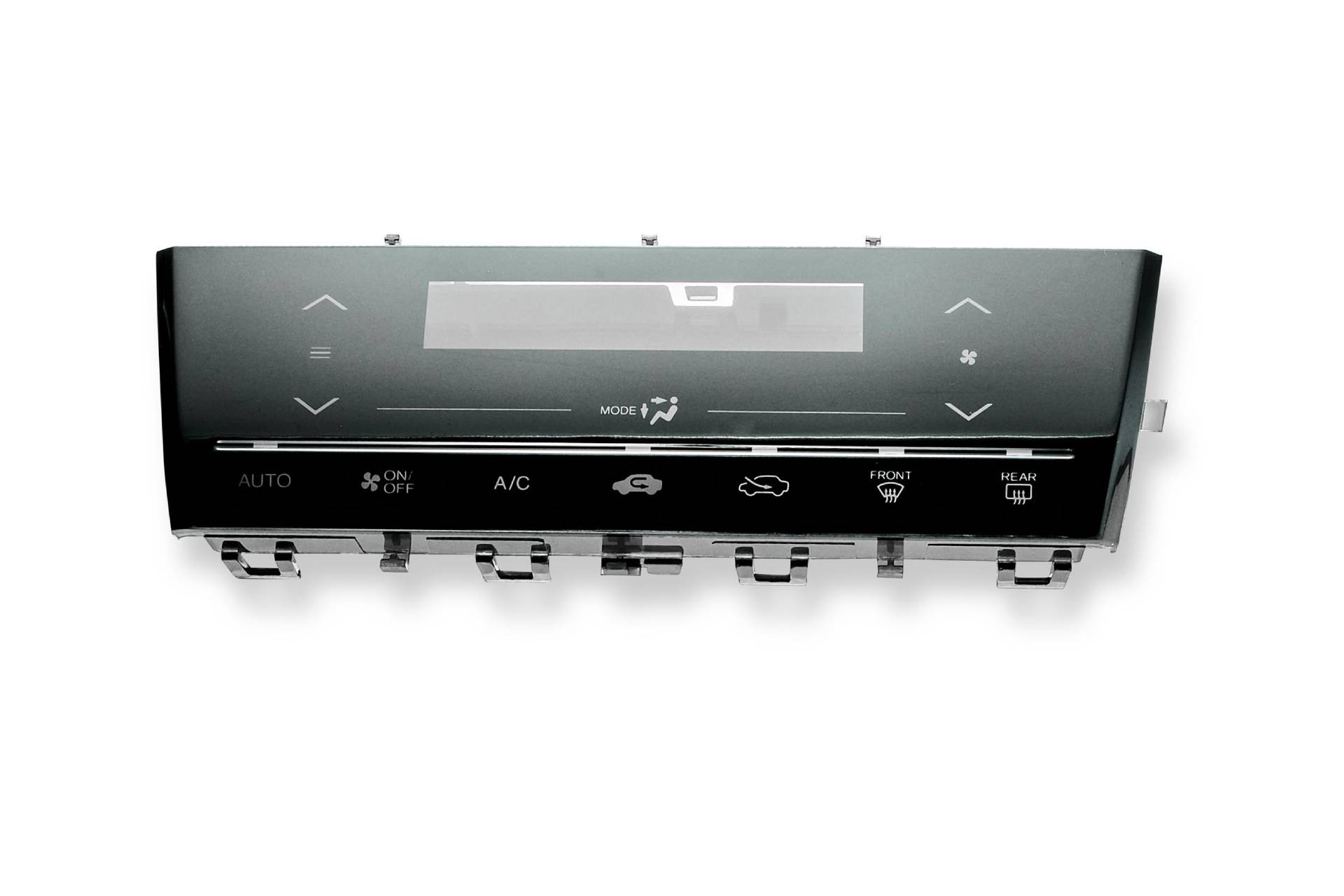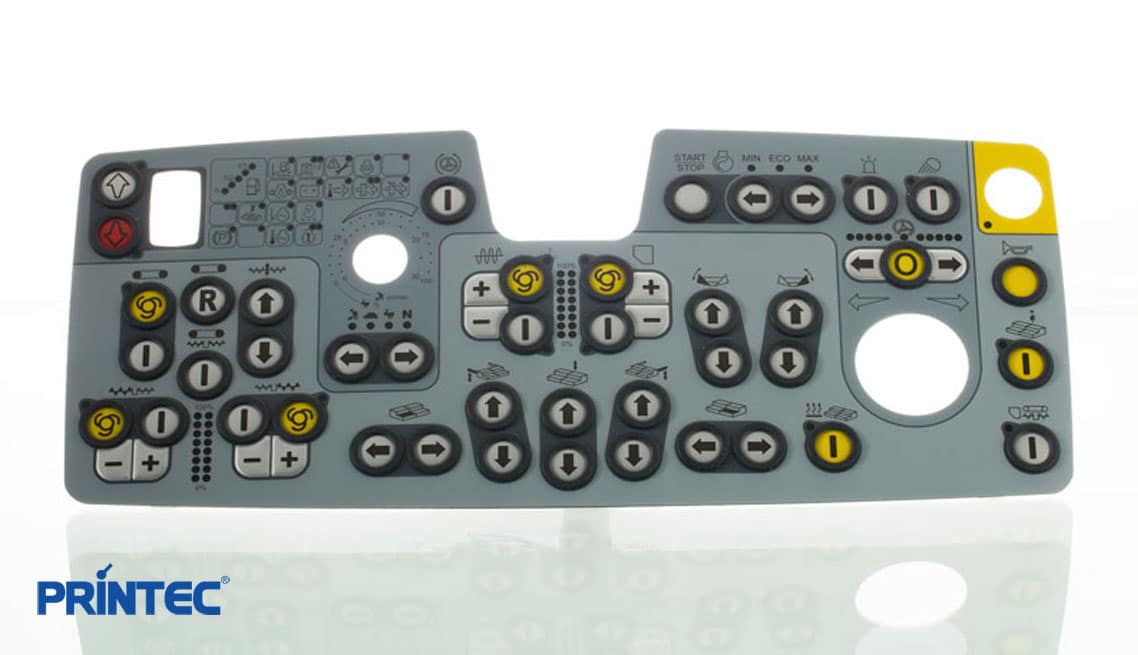An innovative membrane switch manufacturer can provide next-gen features and materials.
An innovative membrane switch manufacturer can provide next-gen features and materials.
Blog Article
All Concerning Membrane Change: Comprehending Its Style and Capability
When you believe regarding the control user interfaces in contemporary tools, membrane layer switches typically come to mind. Let's discover what sets membrane layer changes apart from other control systems.
What Are Membrane Layer Buttons?

Their seamless nature makes them simple to tidy and resistant to dirt and wetness, a vital function in many atmospheres. Membrane layer buttons can likewise be customized concerning shape, size, and graphics, allowing suppliers to create one-of-a-kind user interfaces tailored to details items. Plus, they're lightweight and thin, which assists in decreasing the overall mass of devices. Generally, membrane switches play a substantial duty in enhancing user experience across a wide range of applications.
Just How Membrane Layer Switches Over Job
When you press a secret on a membrane switch, it turns on an uncomplicated yet effective device. membrane switch manufacturer. The leading layer, often made of versatile product, presses down onto a conductive layer under it.
You'll discover that the responsive responses varies based upon the switch style, offering either a soft click or a much more noticable feedback. As soon as you launch the secret, the membrane layer go back to its initial placement, resuming the circuit and stopping the signal. This procedure happens virtually instantly, ensuring a responsive user experience.
Membrane layer switches are preferred due to their resilience and resistance to dirt and moisture, making them excellent for numerous applications, from home devices to clinical gadgets. Understanding this procedure aids you value their widespread usage.
Key Elements of Membrane Layer Buttons
Comprehending the vital elements of membrane layer switches is essential for realizing their capability and design. At the core, you'll find the visuals overlay, which offers the visual interface for customers. Under that, there's a spacer layer that separates the circuit layers, ensuring that they do not make get in touch with up until pressed. The circuit layer is where the magic occurs; it consists of conductive traces that finish the circuit when you press the switch. Another essential component is the glue backing, permitting the switch to abide by surface areas safely. Lastly, the safety layer shields versus environmental factors and put on, prolonging the button's life-span. Each element plays a significant duty in making certain reputable efficiency and customer interaction. By understanding these components, you'll acquire insight into exactly how membrane switches operate and their significance in different applications.
Materials Utilized in Membrane Layer Switch Design
The efficiency and toughness of membrane changes heavily rely on the products utilized in their style. You normally come across polyester and polycarbonate as key substrates due to their excellent stamina and versatility. These products stand up to scratches and chemicals, making them ideal for requiring atmospheres.
The conductive layers often use silver or carbon, chosen for their integrity and conductivity. membrane switch manufacturer. Silver supplies superior performance, while carbon is a cost-effective option. For the overlay, you could consider a matte or glossy coating, depending upon your visual demands and user experience
Make specific to select adhesives that withstand environmental variables like temperature and humidity. Choosing the ideal materials will assure your membrane layer switch stands the examination of time.
Style Considerations for Membrane Switches
While creating membrane buttons, it's vital to take into account various elements that affect their capability and individual experience. Beginning by concentrating on the design and button dimension; make specific they're intuitive and very easy to navigate.
Don't overlook the visuals style; clear labeling and color comparison are substantial for presence. Confirm your design accommodates environmental factors, like dampness or temperature level variations, which could impact performance. Keep in mind the relevance of screening prototypes with actual individuals to gather responses and make needed adjustments. This repetitive procedure helps you fine-tune the layout, validating it fulfills both functional and aesthetic requirements properly. By very carefully considering these aspects, you'll develop a membrane layer button that enhances functionality and contentment.
Applications of Membrane Switches
Membrane buttons are flexible elements located in numerous applications, from industrial devices to consumer electronic devices. You'll see their influence in machines that call for durable user interfaces and in tools that take advantage of streamlined styles. Understanding these applications assists you value the functionality and practicality of membrane buttons in day-to-day modern technology.
Industrial Equipment Usage
When you're looking to improve the capability try this web-site of commercial equipment, membrane layer switches offer a reliable service that combines toughness with straightforward layout. These buttons are perfect for harsh atmospheres, supplying resistance to dust, wetness, and chemicals. Accept membrane layer buttons to streamline your procedures and enhance overall efficiency.
Consumer Electronics Assimilation
In the domain name of customer electronic devices, membrane layer buttons play a crucial role in enhancing user interaction and device functionality. Membrane layer switches additionally assure longevity and resistance to dust and wetness, extending the life-span of your electronics. By choosing membrane switches, you boost not simply the functionality however also the design of your devices, making daily interactions smooth and enjoyable.
Benefits and Disadvantages of Membrane Layer Buttons
While membrane switches supply a series of advantages, they additionally include some drawbacks that you ought to take into consideration. One significant benefit is their compact style, making them ideal for space-constrained applications. They're likewise cost-efficient, offering a resilient remedy with a low production expense. On top of that, their smooth surface is simple to clean, improving hygiene in environments like health centers.

Nevertheless, there are downsides. Membrane layer buttons can have a shorter lifespan compared to mechanical buttons, specifically under heavy usage. They can also be much less tactile, which might affect individual comments during procedure. Furthermore, if damaged, repairing them can be challenging and often requires complete substitute. Ultimately, their level of sensitivity to severe temperatures and ecological problems might limit their performance in certain settings. Stabilizing these advantages and disadvantages will help you establish if membrane layer switches are the appropriate suitable for your project.
Frequently Asked Questions
How Much Time Do Membrane Changes Normally Last?
Membrane switches over typically last in between 5 to 10 years, depending upon use and environmental conditions. You'll desire to assess variables like wear, exposure to wetness, and temperature level variations to evaluate their long life successfully.
Can Membrane Switches Over Be Customized for Specific Layouts?
Yes, you look at more info can customize membrane layer switches to fit specific styles (membrane switch manufacturer). You'll have the freedom to select shades, forms, and layouts that match your task's requirements, ensuring they blend seamlessly with your total aesthetic
What Is the Price Array for Membrane Layer Switch Production?
The price array for membrane button production usually falls in between $1 and $10 each, depending upon factors like layout intricacy, quantity, and products. You can get quotes from suppliers to find the ideal option.

Are Membrane Layer Switches Over Water Resistant or Immune?
Membrane layer buttons can be developed to be water resistant or resistant, depending on products utilized and building and construction techniques. If you need them for damp environments, assure you define those needs during the style process.
Just How Do Membrane Switches Compare to Typical Buttons?
Membrane layer switches are usually thinner and more versatile than conventional buttons, offering a smooth layout. They're commonly easier to clean and incorporate, however may not provide the tactile feedback you're made use of to with mechanical choices.
Final thought

Report this page